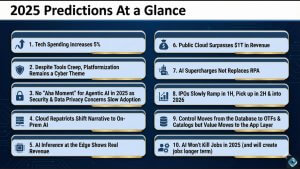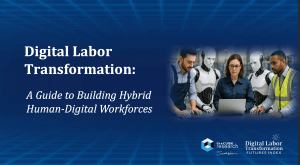Executive Summary
HashiCorp’s announcement at HashiConf 2025, their first as an IBM company, unveiled a clear strategic vision to move infrastructure automation beyond simple Infrastructure as Code (IaC) to intelligent, agentic operations. The cornerstone of this strategy is Project infragraph, a real-time relational graph designed to be the unified system of record for all infrastructure, security, applications, and ownership across hybrid environments.
This is not just a feature release; it’s a commitment to solve the “Day 2 operational nightmare” that plagues large-scale cloud adoption. By creating a single, consistent data model, HashiCorp (and by extension, IBM) is laying the groundwork for AI agents to observe, reason, and act across the application lifecycle. The complexity of operationalizing AI itself demands a new, intelligent layer of infrastructure management, and Project infragraph wants to be that layer.
The Unified Control Plane for Hybrid IT
The concept of a unified control plane has long been the holy grail for multi-cloud governance. HashiCorp’s Project infragraph seeks to achieve this by moving beyond abstract configuration files to a living, real-time map of the entire IT estate. This approach directly combats the fragmentation and loss of context that stalls Day 2 operations and inhibits scalable AI adoption.
The Value of Relational Context
The utility of a real-time infrastructure graph extends far beyond simple asset inventory:
- Tailored Insight & Faster Decision-Making: By connecting infrastructure, applications, and team ownership, the graph could allow platform teams to instantly answer critical questions like: “Which application teams are affected by the maintenance window on this specific cloud region?” and “Who is accountable for the configuration of this service?”
- Precision Policy Enforcement: With flexible access to infrastructure context, policies may be enforced with surgical precision. Policy as code (PaC) could move from general rules to contextual, relationship-aware guardrails.
- Agentic Workflow Readiness: The ultimate goal is to enable AI to reason about infrastructure state. The graph aims to serve as the intelligent data source for future AI runbooks, configuration change proposals, and autonomous remediation, a step towards intelligent infrastructure operations.
The strategic coupling with the broader IBM portfolio (Ansible, OpenShift, watsonx, Turbonomic, Cloudability) is a critical development. This synergy creates a compelling, vendor-agnostic hybrid cloud story; HashiCorp handles provisioning and security policy, while IBM tools leverage the infragraph for application deployment, optimization, and FinOps. ITDMs already invested in the IBM ecosystem should see this as a high-priority integration pathway for unifying their operational data models.
Scaling and Simplifying IaC
The Infrastructure Lifecycle Management updates focus on reducing the operational overhead inherent in managing large, sprawling Infrastructure as Code deployments, aiming to ensure today’s stability while facilitating tomorrow’s autonomy.
Key Operational Efficiencies
| Capability | Impact for IT Decision Makers |
| HCP Terraform Stacks (GA) | Could simplify Day 2 operations and governance by allowing teams to deploy and manage large, interdependent infrastructure sets (e.g., development, staging, production environments) as a single, reusable unit. |
| HCP Terraform Actions (Beta) | Aims to codify common Day 2 operational tasks (like patching or monitoring setup) directly alongside the IaC, lowering operational costs and enabling seamless, first-class integration with configuration management tools like Red Hat Ansible. |
| HCP Terraform MCP Server (Beta) | May prepare teams for agentic interaction, and enable engineers to use natural language to perform actions (e.g., “trigger a run for the QA environment”) via an AI client, lowering the barrier to entry for complex IaC operations. |
| HCP Packer SBOM Storage (GA) | Could provide audit readiness and compliance by ensuring a Software Bill of Materials (SBOM) is automatically generated and stored for every artifact built. |
The maturation of Terraform with Stacks and Actions acknowledges that IaC is a continuous process, not a one-time deployment. The convergence of Terraform (provisioning) and Ansible (configuration) under the IBM umbrella is now being productized, with the goal of delivering the end-to-end automation pipeline the industry has long demanded.
Hardening the Zero-Trust Perimeter
HashiCorp’s SLM updates focus on tightening the identity-based security controls required to maintain a zero-trust architecture in increasingly complex environments. These enhancements aim to address the reality that security vulnerabilities are most often introduced during development or through human-to-system access.
Critical Security Enhancements
- Shift Left Secrets Detection: HCP Vault Radar Jira SaaS scanning (GA) and the IDE plugin enhancement (beta) push secrets detection to the earliest stages of the development process.
- Secured Remote Access: HCP Boundary RDP Credential Injection (Beta) could solve a massive security headache by injecting Windows RDP credentials directly into the session.
- Enhanced Visibility & Governance: The HCP Vault Dedicated secrets inventory reporting (beta) may give security teams the visibility they need to prioritize post-quantum readiness efforts, track adoption trends, and identify stale or unused secrets.
- AI-Enabled Security Operations: The introduction of the HCP Vault Radar MCP server (beta) could give security agents the ability to query for and receive validated context about secrets exposure using natural language.
Looking Ahead
The strategic focus of the SLM updates is on enforcing identity-based security while maintaining developer velocity. For the CISO, the new capabilities may streamline the path to audit readiness and simplify the most complex elements of zero-trust: secrets management and privileged access. The combined ILM/SLM roadmap underscores that in the agentic future, the most efficient infrastructure will inherently be the most secure.



